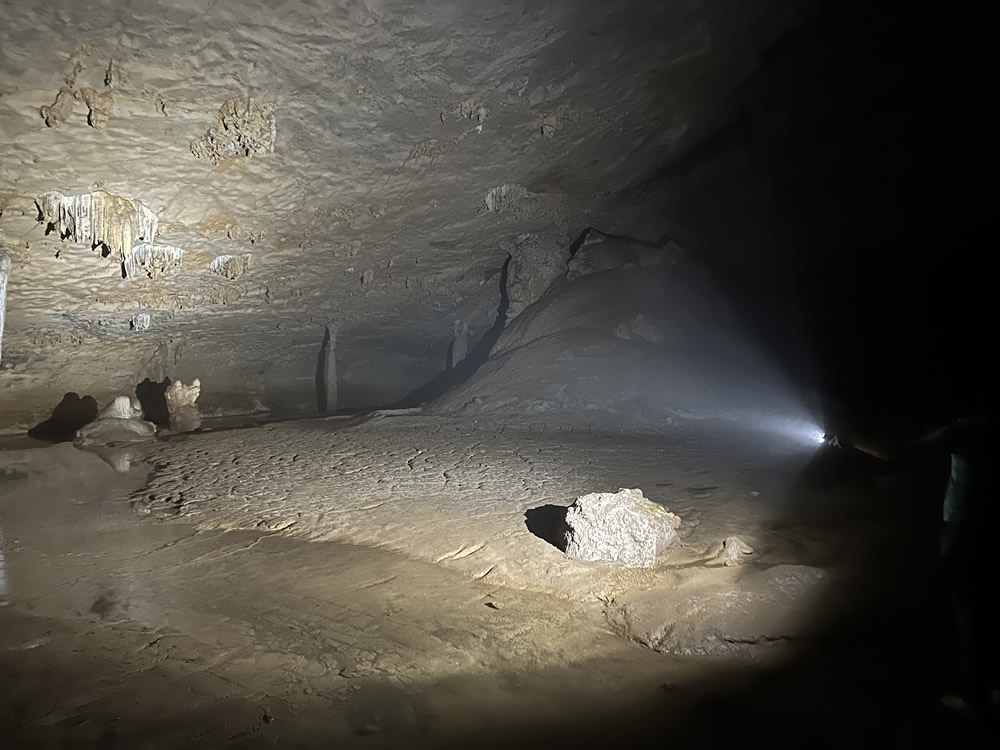Using Flashlights in Extreme Cold or Hot Environments

Extreme temperatures can significantly impact how flashlights perform. In cold conditions, batteries lose efficiency as their internal resistance increases, reducing power output. High current LEDs may fail to turn on, while low current LEDs often continue working. Lithium batteries perform better than alkaline ones, even at temperatures as low as -45°F. On the other hand, heat can shorten battery life and cause materials to warp.
Reliable flashlights are essential for cold weather safety and emergencies. They provide visibility to navigate hazards and signal for help when needed. Choosing the right flashlight ensures it withstands harsh environments and functions when you need it most.
Key Takeaways
Use lithium batteries in cold weather. They work better than alkaline batteries in freezing temperatures, so your flashlight stays reliable.
Pick flashlights made from strong materials like aluminum or tough plastics. These materials don’t crack in the cold or bend in the heat, making your flashlight last longer.
Keep your flashlight in cool, shaded spots during hot weather. This stops it from getting too hot and keeps it safe to use.
Check your flashlight often for any damage. Look for cracks and make sure the battery area is clean so it’s ready when needed.
Bring extra batteries and keep them warm in cold weather. This makes sure your flashlight has power when you need it most.
The Impact of Extreme Temperatures on Flashlights

Effects of Extreme Cold-Weather Conditions
Reduced battery efficiency and lifespan
Extreme cold-weather conditions can significantly reduce the efficiency and lifespan of flashlight batteries. Cold temperatures increase the internal resistance of most batteries, which lowers their output. This is especially true for alkaline batteries, as they perform poorly in cold weather due to reduced ion mobility. Rechargeable batteries, such as Sanyo Eneloop NiMH, also struggle in these conditions. However, lithium batteries, like Panasonic CR123A, are a better choice. They function well in cold temperatures and have a wide operating range.
Tip: High-powered LED flashlights generate heat during extended use. This heat can help improve battery performance in cold weather. Short bursts of use, however, may not provide enough warmth to counteract the cold.
Material brittleness and cracking risks
Cold temperatures can make flashlight materials brittle, increasing the risk of cracking. Plastics are particularly vulnerable, as they lose flexibility and become prone to breakage. Metal flashlights, especially those made from aluminum, are more durable in cold conditions. Choosing a flashlight with reinforced materials can help you avoid damage during use in freezing environments.
Effects of Extreme Heat
Battery overheating and leakage risks
High temperatures can cause batteries to overheat, leading to leakage or even failure. This not only reduces the flashlight's performance but also poses safety risks. Lithium batteries are more resistant to heat compared to alkaline ones, but you should still monitor them closely during use in hot environments.
Material warping and reduced durability
Prolonged exposure to extreme heat can warp flashlight materials, especially plastics. Warping compromises the flashlight's structural integrity and reduces its durability. Flashlights made with heat-resistant materials or coatings are better suited for hot environments.
General Challenges in Extreme Environments
Condensation and moisture issues
Condensation can form inside flashlights when they transition between extreme temperatures. This moisture can damage internal components and reduce performance. Waterproof flashlights with high IPX ratings are essential for preventing water-related issues.
Impact on light output and performance
Extreme temperatures, whether hot or cold, can affect the light output of your flashlight. In cold weather, reduced battery efficiency leads to dimmer light. In hot conditions, overheating can cause the flashlight to shut down or reduce brightness. Flashlights designed for extreme environments often include features like efficient heat dissipation and dustproof designs to maintain consistent performance.
Choosing the Right Flashlights for Extreme Conditions

Features for Cold Weather Safety
Flashlights with lithium batteries for better cold performance
When temperatures drop, lithium batteries outperform other types. They maintain efficiency in extreme cold and resist temperature-related chemical slowdowns. Unlike lead-acid batteries, lithium batteries weigh less and last longer, with up to 5,000 cycles compared to 400 cycles for lead-acid. Some even include built-in heaters, ensuring reliable performance in freezing conditions. You can depend on these batteries to power your flashlight during cold weather emergencies.
Durable materials like aluminum or reinforced plastics
Flashlights made from durable materials handle cold weather better. Aluminum is lightweight and conducts heat efficiently, preventing overheating during extended use. Reinforced plastics, on the other hand, absorb shock more effectively than aluminum. This flexibility allows them to withstand impacts without cracking. Choosing a flashlight with these materials ensures it remains functional and durable in harsh environments.
Features for Hot Environments
Heat-resistant materials and coatings
In hot environments, flashlights with heat-resistant materials perform better. Aluminum, with its excellent heat conduction, helps dissipate heat and prevents warping. Some flashlights also feature special coatings that protect against high temperatures. These features ensure your flashlight remains reliable even in extreme heat.
Flashlights with overheat protection mechanisms
Overheat protection mechanisms safeguard your flashlight from damage caused by prolonged use in hot conditions. These systems monitor internal temperatures and automatically reduce power output when necessary. This feature not only extends the flashlight's lifespan but also enhances safety during use.
Universal Features for Emergencies
Waterproof and weatherproof ratings (e.g., IPX standards)
Waterproof and weatherproof flashlights are essential for emergencies. IPX ratings indicate their level of protection. For instance:
IPX4 flashlights resist splashes, making them suitable for light rain.
IPX7 models can survive submersion up to 1 meter for 30 minutes.
IPX8 flashlights handle continuous immersion, ideal for demanding conditions.
Selecting the right IPX rating ensures your flashlight performs well in any environment.
Shock resistance and rugged designs
Flashlights with shock-resistant and rugged designs withstand drops and impacts. These features are crucial during emergencies when reliability matters most. A sturdy flashlight ensures you have dependable light, even in challenging situations.
Practical Tips for Using Flashlights in Extreme Temperatures
Tips for Cold-Weather Conditions
Keep flashlights and batteries warm (e.g., in pockets or insulated cases)
In cold weather, keeping your flashlight and batteries warm ensures optimal performance. Cold temperatures reduce ion mobility in alkaline batteries, causing them to lose efficiency. Lithium batteries, such as Panasonic’s CR123A or Energizer’s Ultimate Lithium L91, perform better in freezing conditions, with operating ranges down to -40°C. To maintain battery efficiency:
Store batteries in a temperature-controlled environment when not in use.
Pre-warm batteries indoors for 15-30 minutes before use.
Avoid charging batteries in sub-zero temperatures to prevent damage.
Carrying your flashlight in an insulated case or keeping it in your pocket can also help maintain warmth and functionality.
Use spare batteries and rotate them frequently
Always carry spare batteries during cold weather. Rotating batteries ensures you have a reliable power source if one set loses charge. Store spares in a designated pouch for easy access during emergencies. Removing batteries from your flashlight during long-term storage prevents leaks and corrosion, extending their lifespan.
Tips for Hot Environments
Avoid direct sunlight and store in shaded areas
High temperatures can cause flashlights to overheat, reducing their durability. Avoid leaving your flashlight in direct sunlight. Instead, store it in shaded or ventilated areas to prevent overheating. This precaution helps maintain its structural integrity and ensures safety during use.
Monitor for signs of overheating during use
When using a flashlight in hot environments, check for signs of overheating. If the flashlight becomes excessively warm, turn it off and allow it to cool. Overheat protection mechanisms in some models can prevent damage, but monitoring remains essential for safety.
General Usage Tips for Emergencies
Test flashlights before heading into extreme conditions
Always check flashlights before using them in extreme environments. Testing ensures reliability and safety. Look for waterproofing, impact resistance, and battery performance. High IP ratings, such as IP67, indicate strong resistance to water and dust. Drop tests simulate real-world conditions, confirming the flashlight’s durability.
Carry backup light sources for power outages or emergencies
Having backup power is crucial during emergencies. A secondary flashlight provides immediate illumination during a power outage, helping you avoid hazards. Energy-efficient LED technology in backup lights reduces heat production and ensures longer use. Built-in emergency batteries offer reliable performance without requiring setup, enhancing safety precautions.
Maintenance and Storage for Optimal Flashlight Performance
Cleaning and Inspecting Flashlights
Remove dirt, moisture, and debris after use
Keeping your flashlight clean ensures it performs reliably during emergencies. Follow these steps to remove dirt, moisture, and debris effectively:
Remove the batteries to prevent accidental activation.
Wipe the exterior with a soft, lint-free cloth or a slightly damp cloth.
Clean the threads with a cloth and apply a silicon-based lubricant to maintain smooth operation.
Use a microfiber cloth or lens cleaning solution to clean the lens without scratching it.
Inspect the battery compartment and contacts. If you notice corrosion, clean them with vinegar or lemon juice.
Tip: After exposure to moisture, dry your flashlight thoroughly with a clean cloth. Avoid using heat sources like hair dryers, as they can damage internal components.
Check for cracks or damage to the casing
Inspect your flashlight regularly for cracks or damage to the casing. Damaged casings can compromise waterproofing and reduce safety during use. Pay close attention to the seal around the lens and tail cap. Testing the switch and light modes ensures the flashlight remains functional in emergencies.
Storing Flashlights in Extreme Conditions
Store in temperature-controlled environments when possible
Proper storage protects your flashlight from extreme conditions. Keep it in a cool, dry place to avoid damage from heat or cold. High temperatures can warp materials, while cold weather drains batteries faster. Even waterproof flashlights can suffer from moisture buildup, so avoid storing them in humid areas like basements or bathrooms.
Remove batteries during long-term storage
Always remove batteries when storing your flashlight for extended periods. This prevents corrosion and leakage, which can damage the flashlight. Improper storage can also lead to battery capacity loss or, in rare cases, dangerous explosions. Removing the batteries ensures your flashlight remains ready for use during a power outage or other emergencies.
Extending Battery Life
Use high-quality rechargeable batteries
Investing in high-quality rechargeable batteries improves flashlight performance and reduces waste. Lithium-ion batteries offer excellent efficiency and durability, even in cold weather. They also provide reliable backup power during emergencies.
Avoid fully depleting batteries in extreme conditions
Extreme temperatures can strain batteries. Avoid fully depleting them, as this shortens their lifespan. Recharge batteries before they run out of power to maintain their efficiency. This practice ensures your flashlight stays dependable when you need it most.
Extreme temperatures can challenge the performance of your flashlights, but preparation ensures reliability. Choose models designed for harsh conditions, such as those with lithium batteries or rugged materials. Lightweight designs and hands-free options, like headlamps, enhance convenience during emergencies. Regular maintenance, like inspecting for wear and storing in cool, dry places, extends their lifespan. Always carry spare batteries and use manufacturer-recommended types to ensure readiness. With proper tools and strategies, you can depend on your flashlight to perform well in any temperature or environment.
FAQ
1. What type of batteries work best in extreme cold?
Lithium batteries perform best in cold conditions. They maintain efficiency and resist chemical slowdowns even at low temperatures. Alkaline batteries lose power quickly in the cold, so avoid using them.
Tip: Keep spare lithium batteries in your pocket to keep them warm and ready for use. 🔋❄️
2. How can I prevent my flashlight from overheating in hot environments?
Store your flashlight in shaded areas and avoid direct sunlight. Use models with heat-resistant materials or overheat protection mechanisms. If it feels too hot, turn it off and let it cool.
Note: Overheating can damage internal components, so monitor your flashlight during extended use. 🌞
3. What does an IPX rating mean for flashlights?
The IPX rating measures water resistance. For example:
IPX4: Splash-resistant.
IPX7: Submersible up to 1 meter for 30 minutes.
IPX8: Continuous immersion.
Choose a flashlight with the right IPX rating for your environment.
4. How do I maintain my flashlight after exposure to moisture?
Dry your flashlight thoroughly with a clean cloth. Remove the batteries and inspect for water damage. Clean the lens and casing to prevent corrosion.
Tip: Avoid using heat sources like hair dryers, as they can harm internal components. 🧼
5. Can I use rechargeable batteries in extreme temperatures?
Yes, but choose high-quality lithium-ion rechargeable batteries. They perform well in both hot and cold conditions. Avoid fully depleting them, as this reduces their lifespan.
Reminder: Recharge batteries before they run out to ensure consistent performance. 🔋
See Also
Exploring Various UV Flashlight Types for Forensic Use
The Benefits and Uses of UV Flashlights Explained
Comparing Diving Flashlights to Standard Flashlights: Key Differences
